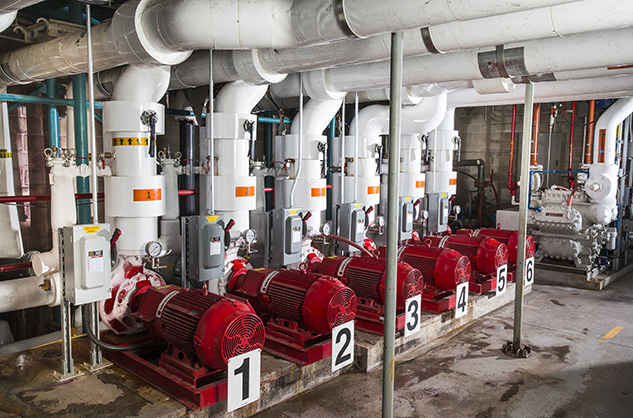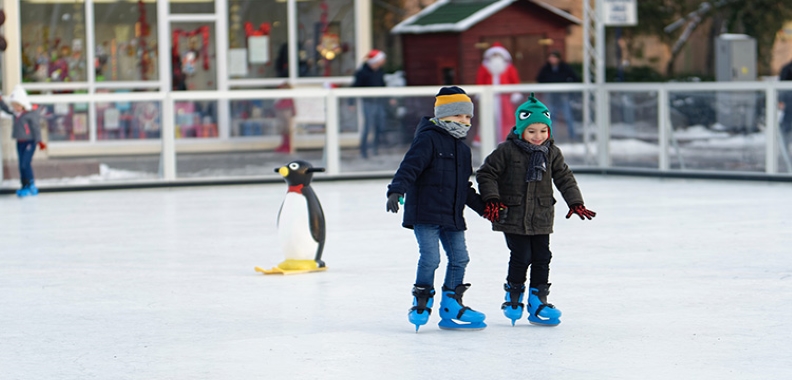Whether you are operating a stand-alone ice rink, a sports multiplex, or a professional sports venue, the question how best to dispose of a resurfacer’s ice shavings is one that all ice-rink managers must answer.
Efficiently and safely maintaining a smooth and solid ice surface is at the core of all ice rink operations. This goes beyond installing and maintaining an environmentally safe and energy-efficient ice rink refrigeration system to keep the ice slab cold. It involves the ongoing and continuous act of resurfacing the ice.
Although the ice resurfacing process has been around since the 1920’s when the first ice resurfacing machine was invented, it is one that is continuously being improved. And fine-tuning methods for disposing of ice shavings in a way that is cost-efficient as well as sanitary is important.
Berg Industrial Service has been offering ice rink maintenance, design, and consulting services for more than twenty years. Here is some of helpful information and tips we have gathered over time that can help ice rink owners and managers determine the best location, design, and maintenance procedures for their snow-melt pits.

Some older ice arenas have not yet incorporated snow-melt pits into their arena designs. Instead, ice shavings are taken outside of the facility and dumped nearby. Although this seems like a simple solution, doing so imposes a whole new set of risks to ice rink managers both in terms of energy loss as well as health hazards.
Every time the ice rink resurfacer leaves the building, the equipment door is left wide open. During cold months, this brings in lower temperatures, thus offsetting the thermal balance of your ice rink facility and requiring additional energy costs to rewarm it.
When the ice rink resurfacer exits the building in warmer seasons, the same imbalance occurs, but in the opposite extreme. In this case moist air enters the arena causing increased strain on the de-humidification ice rink refrigeration systems. More energy resources are required to stabilize the environment in your chiller.
Dumping ice shavings outside of the ice rink can present safety risks to visitors of your facility as well. Depending on where the outside dump station is located, the view of drivers can be obstructed and the safe flow of traffic affected.
A large accumulation of bacteria-filled ice is also prone to become a community health risk. Coming into contact with the “invisible body fluids” that are also removed during the ice scraping process can result in Legionairs Disease, Pontiac Fever and other health complications. Because children are attracted to snow mounds as a play place, it is best not to dump ice shavings outside.
Ice rink managers and facility professionals must be aware of where ice shavings will ultimately rest. A snow-melt pit that integrates with a customized ice rink chiller system is recommended for both safety and cost reasons.

Using a snow-melt pit to dispose of ice shavings is not always as straight forward, either. There are location and design elements to be taken into consideration.
Snow melt pits that are undersized or poorly functioning may cost the facility thousands of dollars in unbudgeted operating funds. Pits that are unable to handle the snow loads will build up results in staff trying to melt the build up with hot water flood. Not only a high energy cost but also lost staff time as the operator is not able to perform their other duties. A significant amount of moist air will be generated during the melting process that should be purged from the room so it cannot enter the rink bowl area.
The unnecessary use of the exhaust fan and loss of heat during cold months can add to the hidden expense of an inadequate design. Further, there are the related water supply and disposal costs to be applied on the building with municipal water consumption.
As you can see, where your snow-melt pit is located and how it is designed has a significant impact on the overall cost of running your operations both in terms of energy efficiency as well as staff time management. Here are ten things to note when choosing to install a snow-melt pit into your ice rink refrigeration facility:
While these tips are helpful for the initial construction of the snow melt pit, being mindful of the ongoing maintenance requirements is also important.
Snow melt tanks look very similar to septic tanks and left unattended will quickly grow to smell like them—imposing foul odours onto workers, user groups and facility patrons. Even worse, the health hazards mentioned above can impose a public health risk to those within your facility.
While it may be tempting to pour large amounts of sanitizing chemical bleach into the tank to resolve the issue, this should never be done. A snow-melt pit should be routinely pumped out by septic-tank type equipment, power washed and sprayed with sanitizer.
The regular cleaning and sanitizing of these areas is essential in creating a safe and healthy work environment.
Berg Industrial Service offers individualized consultation services for the best placement of your snow-melt pit and cost-efficient designs to provide to the engineer. In addition to installing snow-melt ice pits we also service them, providing annual or routine maintenance as needed.
Contact us for help with designing, installing, and maintaining your industrial chiller system’s snow-melt ice pit today.